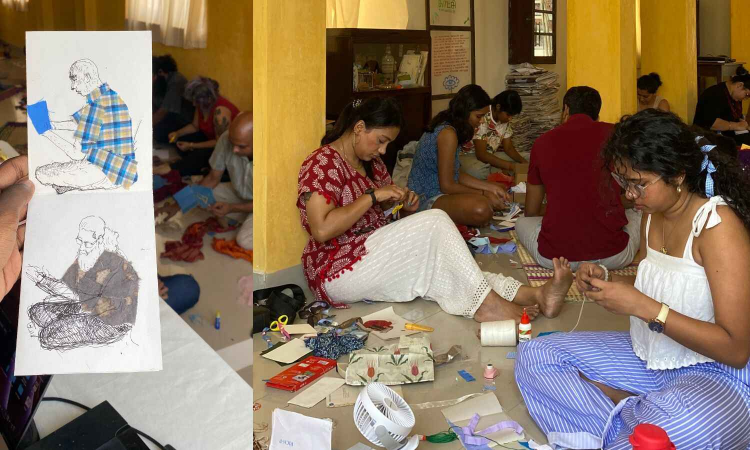Chennai's first zine club turns everyday material into art
The club meets on the second Sunday of every month at a gallery called Kannadi Cupboard in Tambaram.

Zine made of fabric, From one of the zine making sessions
CHENNAI: A zine, short for magazine or fanzine, is typically described as a self-published, small-circulation booklet, often handmade and focused on niche interests or personal stories. But for Prasanna, who runs the city’s first zine club, the definition goes beyond that.
“Anything that is self-published, made out of any material and created from your own thoughts can be a zine,” says Prasanna. Along with his sibling Keerthana, he started the Zine Club a few months ago. The club meets on the second Sunday of every month at a gallery called Kannadi Cupboard in Tambaram.
“Zines let you express yourself. There’s no fixed structure in zine making. It’s simple, personal and you get to decide what goes into it. That freedom is what makes it so liberating.”
The siblings opened the Kannadi Cupboard gallery in December last year. They felt the need to host something ongoing and creative that would keep the space active throughout the year. “I’ve always wanted to be part of a zine club like the ones I’ve seen in other countries. So I decided to start one in my own city,” he tells us.
What sets their zine club apart is its unique approach. “We pick a different raw material every month. For example, we’ve used the backs of old calendars, fabric waste, old wedding invitations, single-sided sheets discarded by printing shops, etc. That way, it’s always a fun challenge and never gets boring. The results are always interesting and they really push people to think creatively.”
Over the past few months, the club has attracted a mix of regulars and new faces. “The group is slowly growing and the response has been great,” says Prasanna. More than just a creative outlet, the zine club is turning into a community-building space. “We want this to be a place where people can meet, interact and make friends. Our participants come from different professions; they don’t need to have an art or design background. For most, it’s just a space to unwind and let their creativity flow freely,” he says.
When asked how participants feel after making their first zine, he shares, “There’s a sense of validation. Many of them come up to us after the session and say they didn’t know how to express themselves before. And many go back and make more zines on their own, based on ideas they care about.”
There’s a classic way of making a zine: folding an A4 sheet three times, making one cut in the center, and folding it into a mini-booklet. “That’s the traditional zine fold. No glue or binding, just one paper and one cut. But you don’t have to stick to that.”



